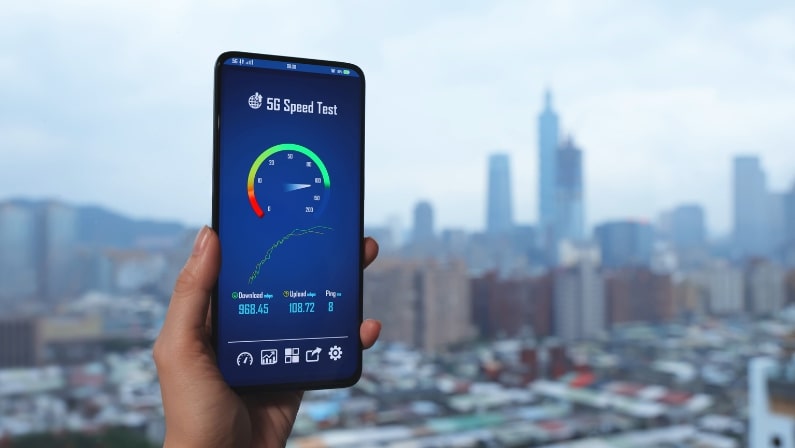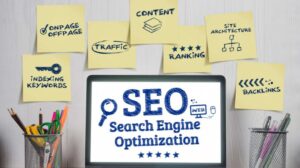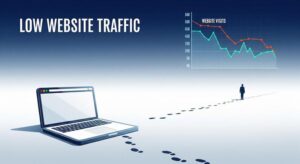Visitors expect instant results. That expectation makes the importance of website speed impossible to ignore. When pages load quickly, people stay longer, view more, and convert at higher rates. When pages hesitate, attention drifts and sales slip away.
The good news is that website speed optimization is achievable with clear priorities and disciplined execution. This guide explains what website speed and performance really mean, why they influence both search and sales, and how to improve website speed without compromising brand or creativity.
Quad Cities Design partners with organizations in Prescott, AZ to build experiences that feel fast and trustworthy. The team plans web design and performance together, then validates improvements with real testing and continuous monitoring. Throughout this article you will find practical steps, helpful tools, and direct links to resources on this site so you can move from ideas to outcomes.
What Is Website Speed and Performance?
Website speed describes how quickly a page becomes usable. It includes the first response from the server, how fast meaningful content appears, and how soon a visitor can interact with controls. Website performance in design goes further to capture stability, responsiveness, and visual smoothness across devices and networks. In plain language, website speed and performance measure how fast a page loads and how well it behaves once it appears.
Key concepts to align your team
- Website load time is the total time to finish loading a page.
- Interactivity marks the moment buttons, forms, and menus respond to a tap or click.
- Visual stability asks whether content shifts around during load.
- Perceived speed is the time a visitor feels is passing, which you can improve by prioritizing above the fold content, using skeleton states, and deferring non essential scripts.
When strategy, design, and development plan around these ideas, the result is a site that feels fast, honest, and easy to trust.
Why Website Speed Matters for Users
People visit to solve a problem or achieve a goal. Speed either clears the path or clutters it. The link between user experience and website speed is direct and measurable.
First Impressions Count
Judgments form in seconds. A page that renders quickly earns confidence before a headline is read. A page that stalls creates doubt that is hard to overcome. Fast loading websites signal reliability and competence.
User Experience
Performance is a core ingredient of user experience, not an add on. Clear typography, intuitive navigation, and thoughtful spacing only shine when the interface responds right away. Web design and performance work together to deliver effort free interactions.
Bounce Rate Reduction
Many bounces happen before content is seen. Lowering website load time keeps visitors engaged long enough to understand your message and take the next step. Even modest gains can reduce pogo sticking on landing pages.
Mobile Friendliness
Phones dominate everyday browsing. Networks vary by location and signal strength, which makes performance discipline essential. Mobile friendly experiences start with fast responses, stable layouts, and minimal scripts that respect limited resources.
Conversion Rates
Every delay adds friction. Slow validations interrupt forms. Hesitating buttons delay checkout. Tightening response times at key steps often produces meaningful lifts in conversion rates because the path from interest to action remains smooth.
Competitive Advantage
In markets where products and messages feel similar, the faster site often wins. Performance best practices become a strategic advantage that competitors struggle to match without rethinking their entire stack.
The SEO Benefits of Fast Websites
Search engines want to present results that satisfy intent. Since speed supports satisfaction, fast pages tend to enjoy stronger visibility over time.
Higher Search Engine Rankings
Speed is one of many ranking factors, yet unlike the behavior of competitors it is entirely within your control. Ongoing website speed optimization, paired with helpful content and clean technical architecture, improves the odds of appearing more often.
Lower Bounce Rates
Engagement patterns send signals. When visitors stay longer and view additional pages, search systems have more reasons to keep sending traffic. Faster pages support those healthy patterns.
Better User Experience UX
Performance and UX rise together. Predictable navigation, clear calls to action, and instant feedback help visitors complete tasks without friction. Search systems consistently reward pages that produce successful visits.
Improved Mobile SEO
Mobile first indexing places pressure on mobile quality. A site that loads quickly and behaves predictably on phones will usually perform more consistently for local and on the go queries.
Efficient Crawling and Indexing
Lean pages make it easier for crawlers to fetch and understand content. Predictable structure and smaller files help more of your site appear in the index and help updates propagate faster.
Higher Conversion Rates
Organic traffic matters most when it produces outcomes. Speed gains that lift conversion rates translate impressions into revenue, which funds further improvements in content and technology.
How Website Speed Impacts Conversions
Imagine a local searcher in Prescott who needs a service today. They tap a result, skim a service summary, view proof of work, then submit a contact form or call. If each step feels instant, momentum builds. If any step stalls, the moment passes. Performance protects momentum.
Quad Cities Design maps these micro journeys during discovery. The team prioritizes the assets that support the most important actions, preloads what needs to appear first, and defers everything that can wait. That approach keeps attention focused on what helps a visitor decide and reduces the chance of abandonment.
Design Choices That Affect Website Speed
Design determines what needs to load and in what order. Smart choices here prevent slow pages later.
Heavy images, videos, and unoptimized media
Oversized images are the most common cause of sluggish pages. Create multiple sizes for each breakpoint, export in modern formats like WebP where appropriate, and compress until file size and clarity are balanced. For simple visual loops, consider lightweight video snippets, animated SVGs, or pure CSS effects.
Overuse of plugins and scripts
Every plugin adds code. Features you do not use still download, parse, and execute. Audit third party scripts regularly, remove what no longer contributes, and load non essential scripts after the main content is interactive.
Complex design elements that slow down rendering
Heavy carousels, intricate animation libraries, and nested layout frameworks can block initial paint. Favor clean layout systems, modest motion, and progressive enhancement that keeps core content light.
Importance of responsive and mobile first design
Responsive design ensures content fits the screen without expensive reflows. Mobile first planning naturally reduces page weight by forcing decisions about what truly deserves priority on smaller screens.
Best Practices for Improving Website Speed and Performance
Use this checklist to improve website speed while preserving brand identity and flexibility.
Optimize and compress images
Serve the right size for each device with responsive attributes. Use vector graphics for icons and simple illustrations. Consider next generation formats when they deliver real savings.
Use caching and Content Delivery Networks CDNs
Server caching reduces repeated processing. Browser caching lets returning visitors reuse assets. A CDN places files closer to users and smooths delivery during traffic spikes.
Minify CSS, JavaScript, and HTML
Minification removes whitespace and comments. Tree shaking removes unused code. Together these reduce file size and improve parse time, which shortens the path to interactivity.
Choose reliable hosting
Hosting affects latency, CPU availability, and uptime. Choose a platform with modern server software, generous resources, and data centers that align with your audience. Prescott businesses often benefit when the primary data center is located in the region.
Implement lazy loading for media
Load images and video only when they enter the viewport. Native lazy loading and simple intersection logic can trim a large amount of work from the initial page load.
Prioritize critical content
Inline a minimal set of styles that paint the first screen quickly. Preconnect to important domains such as a CDN and defer non essential resources so the browser can focus on what matters most.
Streamline fonts
Use a minimal set of weights and styles. Serve modern formats and set font display rules that prevent invisible text. System fonts are a strong option when brand allows.
Monitor third party embeds
Maps, chat tools, schedulers, and social embeds can add significant overhead. Test each one, load on interaction when possible, and provide static alternatives for pages that do not need the full embed.
Keep code lean
Remove unused components and legacy styles during each release. Simpler codebases are faster to execute and easier to maintain.
Build a performance checklist
Add performance gates to design reviews, code reviews, and pre launch testing. A short recurring checklist protects speed with less effort than emergency fixes after launch.
Tools to Measure Website Performance
Measurement turns opinion into action. Use more than one tool and confirm improvements with repeated tests.
Google PageSpeed Insights
Field data when available and lab results for any URL, plus specific opportunities and diagnostics.
pagespeed.web.dev
GTmetrix
Clear waterfalls, filmstrips, and history that make before and after comparisons easy.
gtmetrix.com
Lighthouse
Built into Chrome DevTools, Lighthouse audits performance, accessibility, best practices, and SEO. Great for staging and local testing.
developer.chrome.com docs for Lighthouse
WebPageTest
Advanced testing from multiple locations, devices, and connection speeds with granular waterfalls and filmstrips.
webpagetest.org
As improvements roll out, layer in real user monitoring so decisions are based on the experiences of actual visitors, not only on synthetic tests.
Common Mistakes to Avoid
- Uploading camera sized images without resizing or compression
- Installing numerous plugins to add tiny features that a few lines of code can handle
- Loading heavy animation libraries on pages that do not require complex motion
- Running multiple analytics or tag managers that duplicate tracking
- Using too many custom fonts and weights for minor visual gains
- Forgetting to enable both server and browser caching
- Ignoring mid range phones and average networks during testing
- Skipping before and after measurements when releasing updates
- Treating performance as a one time project rather than an ongoing practice
Work With A Professional Web Design Team
Website speed and performance require coordination across strategy, design, and engineering. Quad Cities Design brings that coordination to new builds and redesigns for organizations in Prescott, AZ. The process emphasizes measurable wins and repeatable practices that keep pages fast after launch.
Explore the approach on the Quad Cities Design home page, review available services, and learn about the local focus on the Prescott web design company page. When you are ready for a speed audit or a full rebuild, contact us to start the conversation.
Make Every Millisecond Count
Speed is a promise to respect the visitor’s time. By planning for performance from the first wireframe through ongoing maintenance, teams earn stronger engagement, higher conversion rates, and steadier search visibility. The search intent behind queries like improve website speed, website speed optimization, and web design and performance is clear. People want practical steps that lead to fast loading websites and better results.
Put the ideas in this guide to work. If a page feels slow, begin with measurement, fix the biggest bottlenecks first, and keep iterating. Prescott businesses that make website speed and performance a habit will see the payoff in more calls, forms, and sales. Quad Cities Design is ready to help you move faster and go further.








